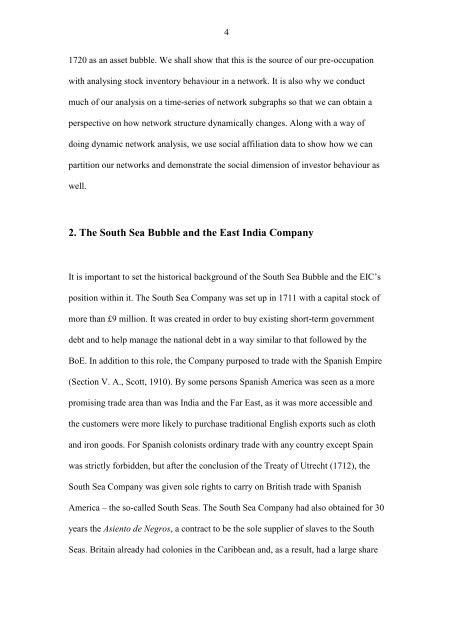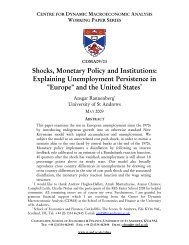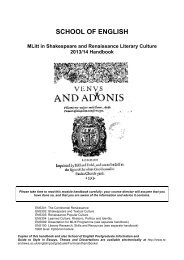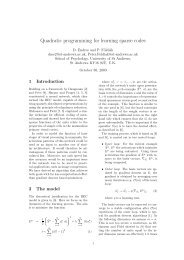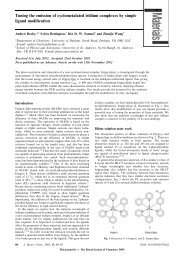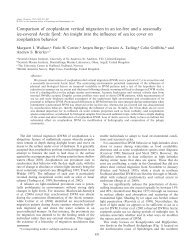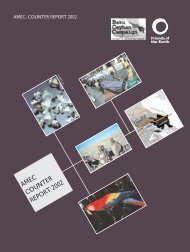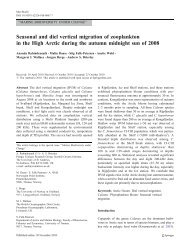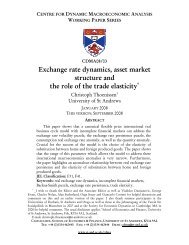East India Company Shareholders and the South Sea Bubble
East India Company Shareholders and the South Sea Bubble
East India Company Shareholders and the South Sea Bubble
Create successful ePaper yourself
Turn your PDF publications into a flip-book with our unique Google optimized e-Paper software.
4<br />
1720 as an asset bubble. We shall show that this is <strong>the</strong> source of our pre-occupation<br />
with analysing stock inventory behaviour in a network. It is also why we conduct<br />
much of our analysis on a time-series of network subgraphs so that we can obtain a<br />
perspective on how network structure dynamically changes. Along with a way of<br />
doing dynamic network analysis, we use social affiliation data to show how we can<br />
partition our networks <strong>and</strong> demonstrate <strong>the</strong> social dimension of investor behaviour as<br />
well.<br />
2. The <strong>South</strong> <strong>Sea</strong> <strong>Bubble</strong> <strong>and</strong> <strong>the</strong> <strong>East</strong> <strong>India</strong> <strong>Company</strong><br />
It is important to set <strong>the</strong> historical background of <strong>the</strong> <strong>South</strong> <strong>Sea</strong> <strong>Bubble</strong> <strong>and</strong> <strong>the</strong> EIC‟s<br />
position within it. The <strong>South</strong> <strong>Sea</strong> <strong>Company</strong> was set up in 1711 with a capital stock of<br />
more than £9 million. It was created in order to buy existing short-term government<br />
debt <strong>and</strong> to help manage <strong>the</strong> national debt in a way similar to that followed by <strong>the</strong><br />
BoE. In addition to this role, <strong>the</strong> <strong>Company</strong> purposed to trade with <strong>the</strong> Spanish Empire<br />
(Section V. A., Scott, 1910). By some persons Spanish America was seen as a more<br />
promising trade area than was <strong>India</strong> <strong>and</strong> <strong>the</strong> Far <strong>East</strong>, as it was more accessible <strong>and</strong><br />
<strong>the</strong> customers were more likely to purchase traditional English exports such as cloth<br />
<strong>and</strong> iron goods. For Spanish colonists ordinary trade with any country except Spain<br />
was strictly forbidden, but after <strong>the</strong> conclusion of <strong>the</strong> Treaty of Utrecht (1712), <strong>the</strong><br />
<strong>South</strong> <strong>Sea</strong> <strong>Company</strong> was given sole rights to carry on British trade with Spanish<br />
America – <strong>the</strong> so-called <strong>South</strong> <strong>Sea</strong>s. The <strong>South</strong> <strong>Sea</strong> <strong>Company</strong> had also obtained for 30<br />
years <strong>the</strong> Asiento de Negros, a contract to be <strong>the</strong> sole supplier of slaves to <strong>the</strong> <strong>South</strong><br />
<strong>Sea</strong>s. Britain already had colonies in <strong>the</strong> Caribbean <strong>and</strong>, as a result, had a large share


